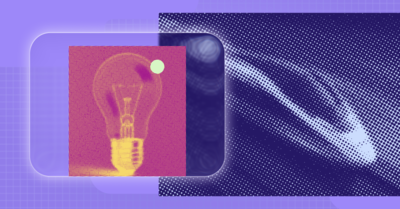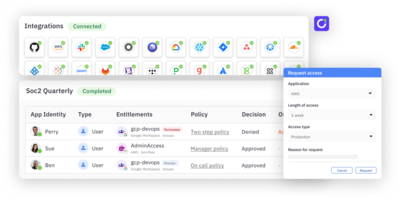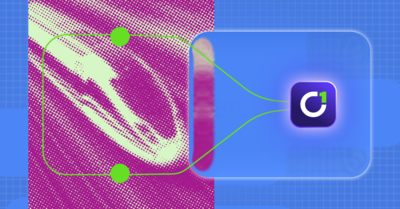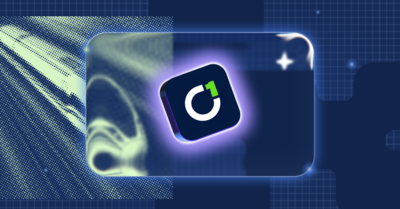Looking for an IGA solution can feel overwhelming. There’s too many options, lots of flashy features, and everyone claiming to be the best choice. But here’s the thing: choosing the wrong IGA solution can have a negative impact on your entire organization’s security and productivity.
This guide is designed to help you simplify the selection process. Whether you’re replacing a legacy platform or exploring modern IGA for the first time, we’ll walk you through how to define your goals, evaluate vendors, and ask the right questions to make a confident, future-proof decision.
Four steps to building your IGA RFP
1. Align with your identity and access management strategy
Before sending your RFP, ensure your IGA objectives align with your broader IAM and security goals. Document who owns each part of the process, from IT and security to HR and compliance, and define how success will be measured.
2. Communicate your business drivers
Set context early. In the first section of your RFP, summarize why you’re investing in IGA now, whether it’s reducing audit fatigue, modernizing lifecycle management, or mitigating access risk. Include key details about your environment (identity providers, major SaaS apps, infrastructure) so vendors can provide realistic responses.
3. Focus on critical use cases
What are your critical use cases? Be sure to include those in your RFP. Common priorities include:
- Automated user access reviews
- Streamlined access requests and approvals
- Integration with identity providers and cloud infrastructure
- Policy- and attribute-based access controls
- Least-privilege enforcement through just-in-time access
- Non-human identity governance
4. Select a future-proof platform
Favor IGA platforms built with a modern architecture: API-first, SaaS-delivered, and easy to extend. Look for AI-native vendors with strong automation and rapid time-to-value. The goal is to choose a partner that will scale with your business and not hold you back as your identity environment evolves.
What to look for in an IGA solution
With so many vendors and solutions on the market, it can be difficult to know what to look for. In addition to the priorities you’ve listed in your RFP, it’s important to evaluate what a solution can bring to your business.
Here’s what to look for in a robust IGA solution:
- Identity lifecycle management: Efficiently manages the entire lifecycle of identities, from onboarding to offboarding. Ensures employees have the right access from day one and lose it immediately upon departure, minimizing security risks.
- Access certification: Automates periodic reviews of access rights to confirm permissions align with current roles and compliance mandates.
- Policy- and attribute-based access control: Simplifies management by assigning permissions dynamically based on job function, policy, or attribute data.
- Just-in-time access: Reduces standing privileges by granting temporary access to sensitive systems only when needed.
- Access request and approval workflows: Automates the resource access process with clear, auditable approval flows.
- Segregation of duties: Prevents conflicts of interest and reduces fraud by ensuring high-risk actions require multiple participants.
- Regulatory compliance management: Keeps you audit-ready with automated evidence collection, review reminders, and detailed reporting.
- Integration capabilities: Modern IGA should connect seamlessly with cloud and on-prem systems—identity providers, directories, SaaS apps, and infrastructure—to provide a unified governance view.
Sample RFP questions to include
Deployment and time-to-value
- What is your typical implementation timeline?
- Do you provide prebuilt connectors and workflow templates?
- Can we configure workflows without coding or professional services?
- Can you outline the process for creating a connector without the assistance of professional services?
Architecture and scalability
- Is your platform API-first and fully SaaS-delivered?
- How does your solution integrate across cloud and on-prem environments?
- What is your uptime SLA and data residency model?
Automation and AI
- What identity governance tasks can be automated out of the box?
- How does AI improve access decision accuracy?
- Which AI features are currently available for use, and which are on the roadmap?
- Can your system detect anomalies or unused entitlements automatically?
Compliance and reporting
- How does your solution support SOX, SOC 2, HIPAA, or GDPR compliance?
- What evidence and audit trails are maintained for access decisions?
Cost and ownership
- What is your pricing model? Are there additional fees for connectors or reporting?
- How often are updates released, and are they included in subscription pricing? (A long schedule (even monthly) is an indication of a legacy tool).
- What internal resources are required post-deployment?
Customer success
- Do you provide a dedicated success manager or onboarding specialist?
- How do you incorporate customer feedback into your roadmap?
- Can you share customer examples of time-to-value and ROI?
How to evaluate vendor fit
When you’re comparing platforms, prioritize:
- Speed to value: How fast can you see measurable improvements in security and efficiency?
- Ease of use: Can non-technical teams manage workflows independently?
- Scalability: Will the platform grow with your environment and workforce?
- Customer experience: Does the vendor offer responsive support, transparent communication, and real partnership?
Why choose ConductorOne
The IGA market is evolving fast. Legacy vendors built for pre-cloud enterprises can’t keep up with today’s hybrid, fast-moving environments. Modern IGA platforms like ConductorOne automate end-to-end identity security, unifying access reviews, provisioning, and privilege management into one intelligent, extensible system.
Here’s a look at why customers like Zscaler, Instacart, and Brex chose ConductorOne as their IGA solution:
- Unified identity graph: Aggregates and visualizes identity and access data across cloud and on-prem systems for full visibility and control.
- Automated access reviews: Streamlines compliance by automating reviews, certifications, and campaign tracking, no manual spreadsheets required.
- Just-in-time access: Delivers temporary, scoped access to reduce standing privileges while keeping workflows fast.
- AI-native: AI-powered insights and Thomas, our AI agent, assist reviewers, recommend access decisions, and flag anomalies.
- No-code automation: Build sophisticated workflows and policies without writing a single line of code.
- Time-to-value in hours, not months: ConductorOne deploys in hours, not months. With prebuilt connectors and an API-first foundation, it fits seamlessly into your environment.
- Predictable, transparent pricing: No surprise fees or professional services dependencies. Usage-based pricing that scales with you.
Choosing the right IGA platform shouldn’t be about buying the biggest feature list. Instead, focus on finding the solution that makes identity governance simple, secure, and scalable.
ConductorOne is built for modern organizations that want automation, visibility, and compliance without the overhead. It connects every app, enforces least privilege, and gives your teams the confidence to move fast, securely.
Ready to simplify identity governance? Get in touch with our team today.





